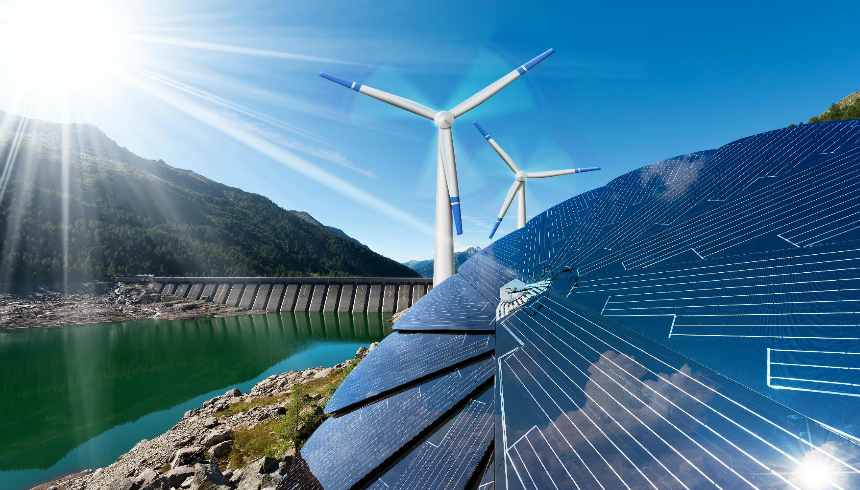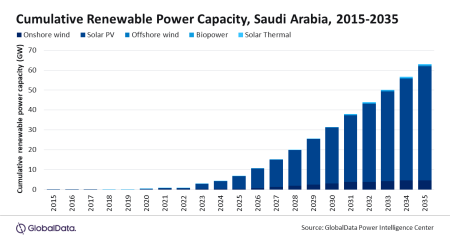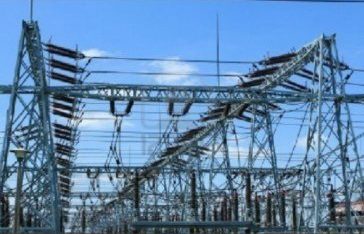
OpeOluwani Akintayo
Lagos — Contrary to common belief that utility firms popularly known as the DisCos are to be solely held culpable for low electricity supply in Nigeria, findings have shown that the electricity generating companies, Gencos, including the Transmission Company of Nigeria, TCN also have their share of blame.
This is because a document obtained and analysed by SweetcrudeReports has revealed that despite high electricity demand by DisCos, GenCos most of the times have not been able to meet up with requested demand. The TCN itself also lacks adequate transmission capacity equipment to send generated power down to the DisCos.
Power Demand versus Generation
For instance, the data sourced from the document revealed that last year, electricity demand of the 11 DisCos had amounted to 9895 megawatts, MW per day however, findings revealed that the utility firms did not get corresponding energy to meet their demands.
Load demand to be served to DisCos depends on two factors: the rate of increase of forecasted demand and, more importantly, the limits of generation expansion plan.
This means that the maximum load demand that can be realistically supplied will have to follow the development of the generation planning schedule and it will be limited by the associated financial and time constraints.
For instance, sourced data showed that between 1973 and 2015, peak generation was increased from 385 MW to 4,884 MW- that is an average growth rate of about 6.3%.
During the same period the annual energy generated increased from 2493 GWh to 31,616 GWh, i.e. with an average growth rate of about 6.4%.
In 2015 peak generation reached 4883.9 MW and on 2nd February 2016, peak output reached 5074.7 MW and had remained so ever since.
Although during the administration of Babatunde Fashola, he said generation had increased to 7000MW however, 2000MW was stranded due to lack of transmission capacity by TCN. And since Fashola’s administration, never had it been declared that the GenCos had generated up to 7000MW. Current peak generation hovers around 4000MW and 5000MW.
The total demand that can be served also includes the export requirements to neighboring countries. From the table below, despite that Nigeria has not been able to meet electricity demand of its over 200 million populace, the country still exports electricity to neighbouring countries. Nigeria has been exporting an increasing amount of electricity to Niger and Benin. While exports amounted to 967 GWh in 2010, the figure had increased to 2,217 GWh as at 2014 and is forecasted to reach 2000MW by 2035. This means that demand of the DisCos would still be cut short due to demand from neighbouring countries.
According to Fichtner, peak output of power stations/GenCos depends on the availability of generation units, water inflow for hydropower plants and gas supply for thermal power plants and not on the actual demand.
“Demand is always much higher than the available generation capacity”, Fichtner said in its expansion plan report for TCN.
For instance, in 2015, the NCC Osogbo daily operational report on 08.12.2015 shows a peak demand forecast (connected + suppressed load) of 14,630 MW, however, the peak generation was about 4,885 MW. That means, only 33% of the estimated demand could be supplied.
NCC’s operational reports show that many generation units are not in operation because of unavailability of gas. On December 8, 2015, for example, about 1,500 MW of generation capacity were not in operation for this reason. In some cases, gas supply has been interrupted because of sabotage of the gas pipeline system.
The table below showed that demand of DisCos would grow to more than 25, 000MW by 2035 however if generation and transmission capacities do not grow in tandem to demand, Nigeria would still by 2035, not attained even the minimum expert forecast of 30, 000MW requirement for attainment of electricity sufficiency.
Load demand per DisCo020 Increase
2020-2025 2025 Increase
| DISCO | DisCo | 2020 | Increase 2020-2025 | 2025 | Increase 2025-2030 | 2030 | Increase 2030-2035 | 2035 |
| IKEDC | 1-Ikeja | 1250 | 16.08% | 1451 | 39.57% | 2025 | 13.66% | 2302 |
| IBEDC | 2-Ibadan | 1225 | 45.31% | 1780 | 50.28% | 2675 | 23.94% | 3315 |
| AEDC | 3-Abuja | 745 | 70% | 1011 | v66.92% | 1688 | 49.86% | 2529 |
| BEDC | 4-Benin | 1273 | 47% | 1750 | 39.98% | 2450 | 16.54% | 2855
|
| KAEDCO | 5-Kaduna | 590 | 78.31% | 1052 | 93.96% | 2040 | 21.82% | 2486
|
| JEDC | 6-Jos | 442 | 48.64% | 657 | 86.06% | 1222 | 10.40% | 1350 |
| EEDC | 7-Enugu | 1090 | 22.29% | 1333 | 25.22% | 1669 | 11.36% | 1859 |
| PHEDC | 8-Port Harcourt | 946 | 55.39% | 1470 | 43.42% | 2108 | 17.70% | 2481 |
| EKEDC | 9-Eko | 1320 | 25.08% | 1651 | 35.51% | 2237 | 13.38% | 2537 |
| KEDCO | 10-Kano | 705 | 34.04% | 945 | 59.22% | 1505 | 31.23% | 1975 |
| YOLA | 11-Yola | 309 | 99.03% | 615 | 83.14% | 1126 | 51.78% | 1710 |
| Total MW | 9895 | 38.61% | 13715 | 51.26% | 20746 | 22.42% | 25397
| |
| Export MW | 387 | 1540 | 1831 | 2000 | ||||
| Total load MW | 10282 | 15255 | 22577 | 27397 |
2030-2035 203
Between load shedding and suppressed demand
Nigerians have over time, had the cause to confuse the meaning of suppressed demand for load shedding.
The term load-shedding refers to the controlled option to reduce load in order to protect the electricity power system from a blackout.
It is therefore different from suppressed demand from DisCos.
Load shedding could be estimated based on information about the duration, the amount or
impact of shed load (i.e. percentage) as well as the location. Therefore, load shedding is not the function of DisCos as it has always been thought, but that of the GenCos.
On the other hand, suppressed demand is when DisCos demand for lesser electricity than needed by consumers.
Transmission Bottlenecks
The TCN currently has more than 22 shunt reactors and over 56 fixed capacitors.
However, according to the report, these would not be enough to transmit enough electricity to the country’s ever-growing population.
The company had recently announced achievement of an all-time peak transmission of 5,459.50MW on the 28th, October 2020. A transmission of about 5500MW is quite inadequate compared to DisCos daily requirement of over 9000MW.
Last year, TCN had spent a total sum of $800 million (N304.2 billion) on transmission lines to add just 10gigawatts to transmission.
Despite the huge amount spent last year, the company plans to borrow another $5,203million which it wants to invest in other transmission projects from this year up until 2030.
According to the document, the projects have been broken down into two phases: the first containing nine projects will run from 2021 to 2025.
The project costs totaling $2, 076million will see a 330Kv transmission lines and substations in the North West Ring, and would gulp a total of $521.3million.
Other projects on the list include the 330 kV North East Ring to cost $651.5million, 330 kV Mambilla Network Connections for $291.6million, additional transmission lines to provide N-1 Reliability by 2025 to cost $283.7million, additional transmission lines to relieve existing lines by 2025 to cost $42million.
An additional 330/132 kV transformers by 2025 to cost $78.1million, 132/33 and 132/11 kV transformers for $68.2million, new reactive power compensation in Lagos Region for $50million, and costs for converting 330 kV DC lines to quad conductors for the sum of $90million.
The other project phase will be carried out between 2025 and 2030. They include:
| Voltage level | Transmission lines (million US$) | Substations (million US$) | Total (million US$) |
| 330Kv | 1161 | 220 | 1381 |
| 500Kv | 722 | 533 | 1256 |
| 750kV | 903 | 686 | 1589 |
The TCN said it is expecting financing from six development banks including the World Bank.
Other development banks expected for financing are: French Development Agency, AFD, Japan International Cooperation Agency, JICA, African Development Bank, AFDB, Islamic Development Bank, IDB, and the French Development Agency, AFD.
| Development Bank | Total million US$ |
| AFD (French Development Agency – Agence Française de Développement) | 170 |
| JICA (Japan International Cooperation Agency) | 200 |
| AFDB (African Development Bank) | 200 |
| World Bank | 486 |
| Islamic Development Bank (IDB) | 210 |
| AFD (French Development Agency – Agence Française de Développement) | 272 |
| Total | 1,538 |



